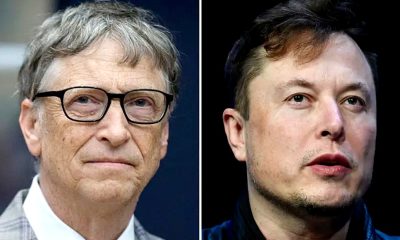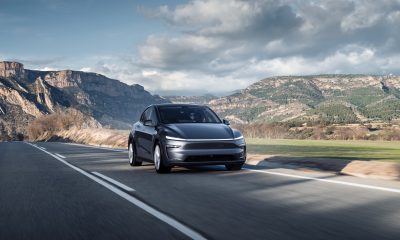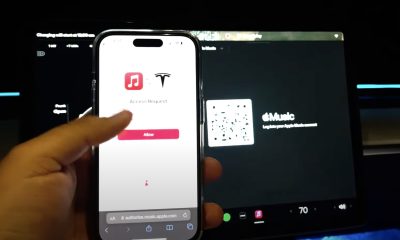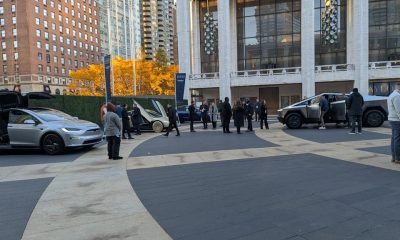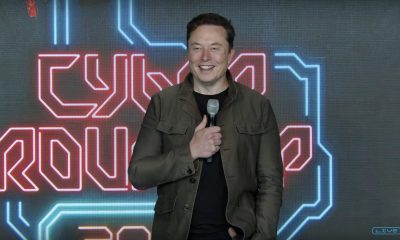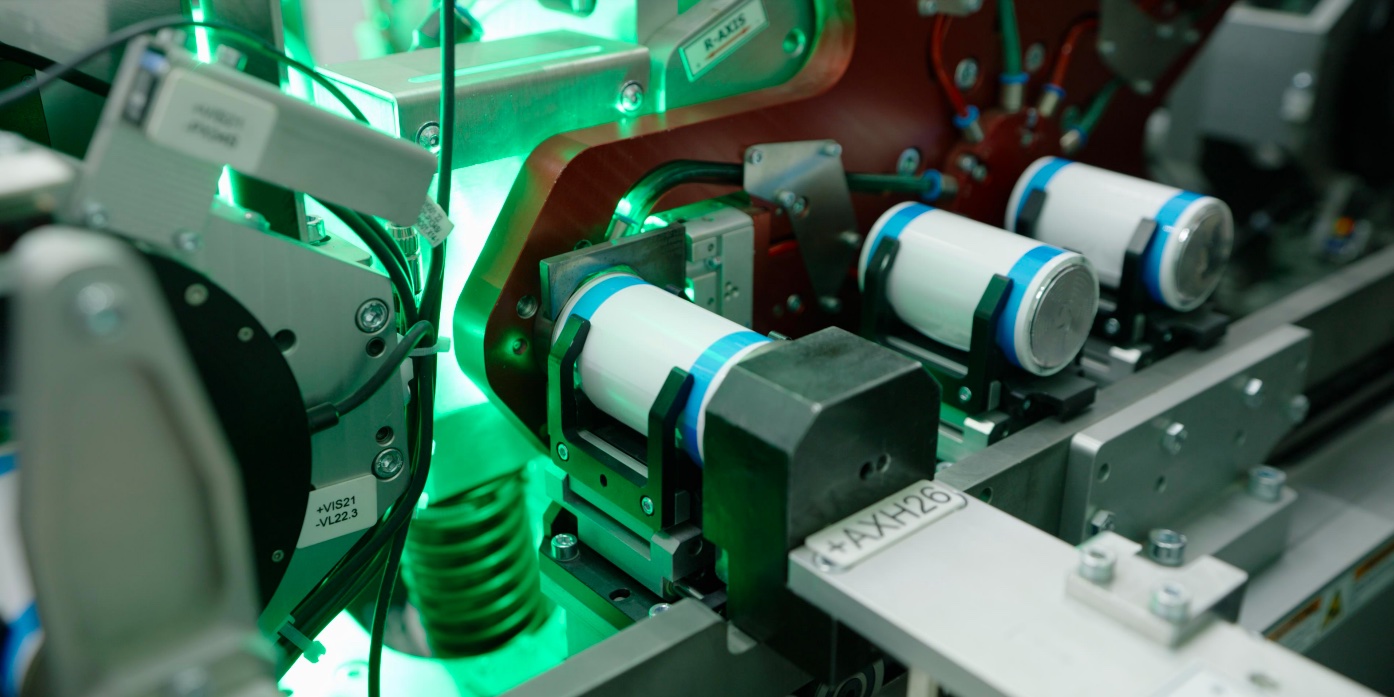

News
Tesla planning to ship dry electrode 4680 battery cells by end of 2024: report
A recent report from China has suggested that Tesla is planning to start the mass production of the complete version of its long-awaited and highly-anticipated 4680 battery, which was initially unveiled in September 2020 during Battery Day. The complete version of the 4680 cells will reportedly be produced using Tesla’s dry electrode process.
Citing people reportedly familiar with the matter, Chinese publication LatePost noted that Tesla is planning to mass produce and install 4680 cells with dry electrodes to consumer vehicles before the end of the year. As per the publication, this upcoming version of the 4680 cell would be the battery’s complete iteration.
LatePost‘s sources claimed that the 4680 cells in the Cybertruck today feature a lower-cost negative electrode and a more costly positive electrode. This is reportedly because the negative electrode in the Cybertruck’s current 4680 cells is produced using Tesla’s dry electrode process, but the batteries’ positive electrode is purchased from suppliers like LG and thus produced using more conventional wet electrode processes.
테슬라, 4680 배터리 "완성형" 개발 마지막 승부수
요약:
1. 테슬라는 올해 말까지 완전 건식 전극 방식의 4680 배터리 양산을 계획하고 있습니다. 이는 4680 배터리의 "완성형" 버전이 될 것입니다.
2. 현재 테슬라의 4680 배터리는 음극만 건식 전극을 사용하고 있으며, 양극는 여전히 전통적인… https://t.co/t4CBOK5jyw pic.twitter.com/Pp6TZjfqNc— Oh Hahm Ma *⃣ (@ohmahahm) July 17, 2024
The dry-process positive electrode is reportedly the most difficult part of the 4680 batteries for now, LatePost noted. The positive electrode is also the component that reportedly has the highest cost share in the batteries themselves for now, exceeding 35% of the cells’ overall cost.
Tesla has reportedly finalized the design of the 4680 cells’ dry-process positive electrode, which is a notable step towards the mass production of the batteries’. One of the publication’s sources, who is reportedly a Tesla insider, noted that mastering dry electrode processes could give Tesla some serious momentum. “Once dry electrodes are developed, they can change Tesla,” LatePost‘s source claimed.
Tesla already uses 4680 cells for the Cybertruck, though the output of the batteries for now is reportedly enough for just about 1,000 units of the all-electric pickup truck per week. The Tesla Cybertruck will reportedly be the recipient of the complete version of the 4680 battery cell as well. Once the output of the 4680 cells are optimized, it would not be surprising if the dry electrode batteries also get rolled out to the company’s other vehicles.
Don’t hesitate to contact us with news tips. Just send a message to simon@teslarati.com to give us a heads up.

Elon Musk
Tesla CEO Elon Musk sends final warning to Bill Gates over short position
“If Gates hasn’t fully closed out the crazy short position he has held against Tesla for ~8 years, he had better do so soon,” Musk said.
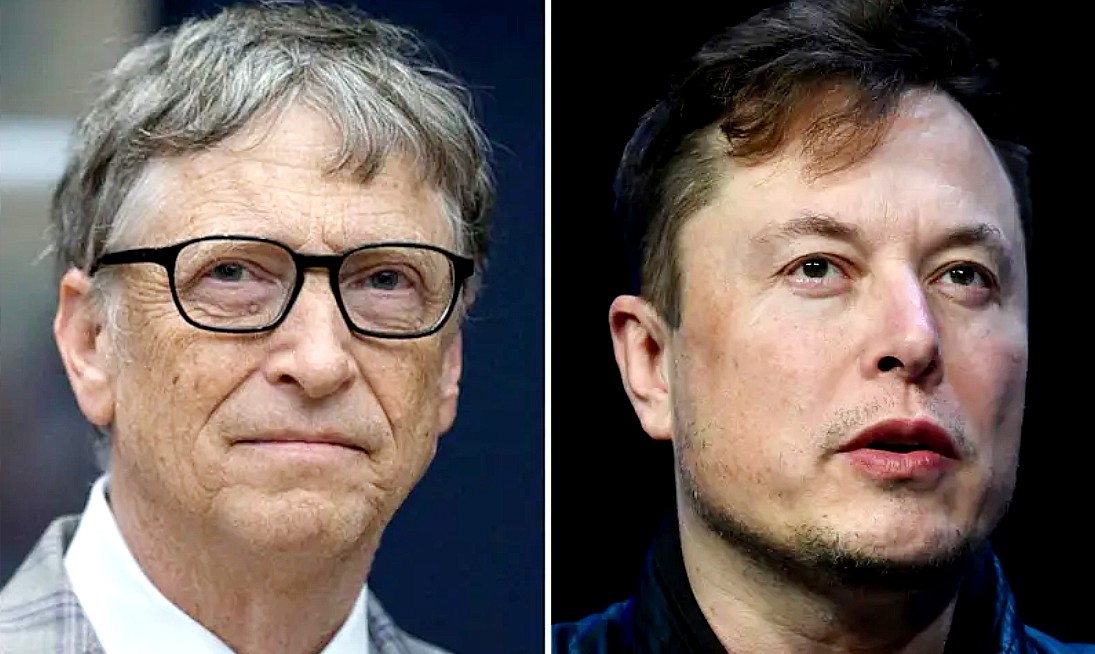
Tesla CEO Elon Musk sent a final warning to former Microsoft CEO Bill Gates over his short position, which he confirmed he held to Musk directly several years ago.
Gates has been a skeptic of Tesla for some time, but he has also tried to work with Musk on philanthropic opportunities several years ago, which was coincidentally when he admitted to the company’s frontman that he held a short position.
Musk was, in turn, “super mean” to Gates, according to Walter Isaacson’s biography about the Tesla CEO. Gates had put $500 million against Tesla, shorting the stock and hoping to profit from its failure.
Elon Musk explains Bill Gates beef: He ‘placed a massive bet on Tesla dying’
A short position essentially means Gates is betting Tesla shares will go down, which would make him money. However, shares have gone up over six percent this year and increased nearly 150 percent over the past five years.
At the recent Annual Shareholder Meeting, Musk made many claims about Tesla’s future projects and how they could manage to disrupt various industries. He also recently had a massive $1 trillion compensation package approved, which will be awarded in twelve tranches, all of which combine a company valuation goal and an individual goal related to a product.
Musk was able to complete his last approved pay package, but it was not awarded due to a ruling by a Delaware Chancery Court. Nevertheless, his track record of proving growth for Tesla shareholders is excellent, and investors are obviously very encouraged by his capabilities as a CEO, considering 76.6 percent of shareholders voted to approve his new compensation.
After it was revealed that the Gates Foundation dumped 65 percent of its Microsoft position for nearly $9 billion, Musk had one final message for him: drop your Tesla short position soon, or else.
If Gates hasn’t fully closed out the crazy short position he has held against Tesla for ~8 years, he had better do so soon
— Elon Musk (@elonmusk) November 16, 2025
Musk’s rivalry with Gates is mostly founded on the Tesla CEO’s discontent with the former Microsoft frontman’s short position. However, Musk might have a bit of a soft spot for Gates, considering he is giving him a warning of what is potentially to come. If he really wanted to do some damage to Gates, he would not give him any heads-up at all.
News
Tesla rolls out most aggressive Model Y lease deal in the US yet
With the promotion in place, customers would be able to take home a Model Y at a very low cost.
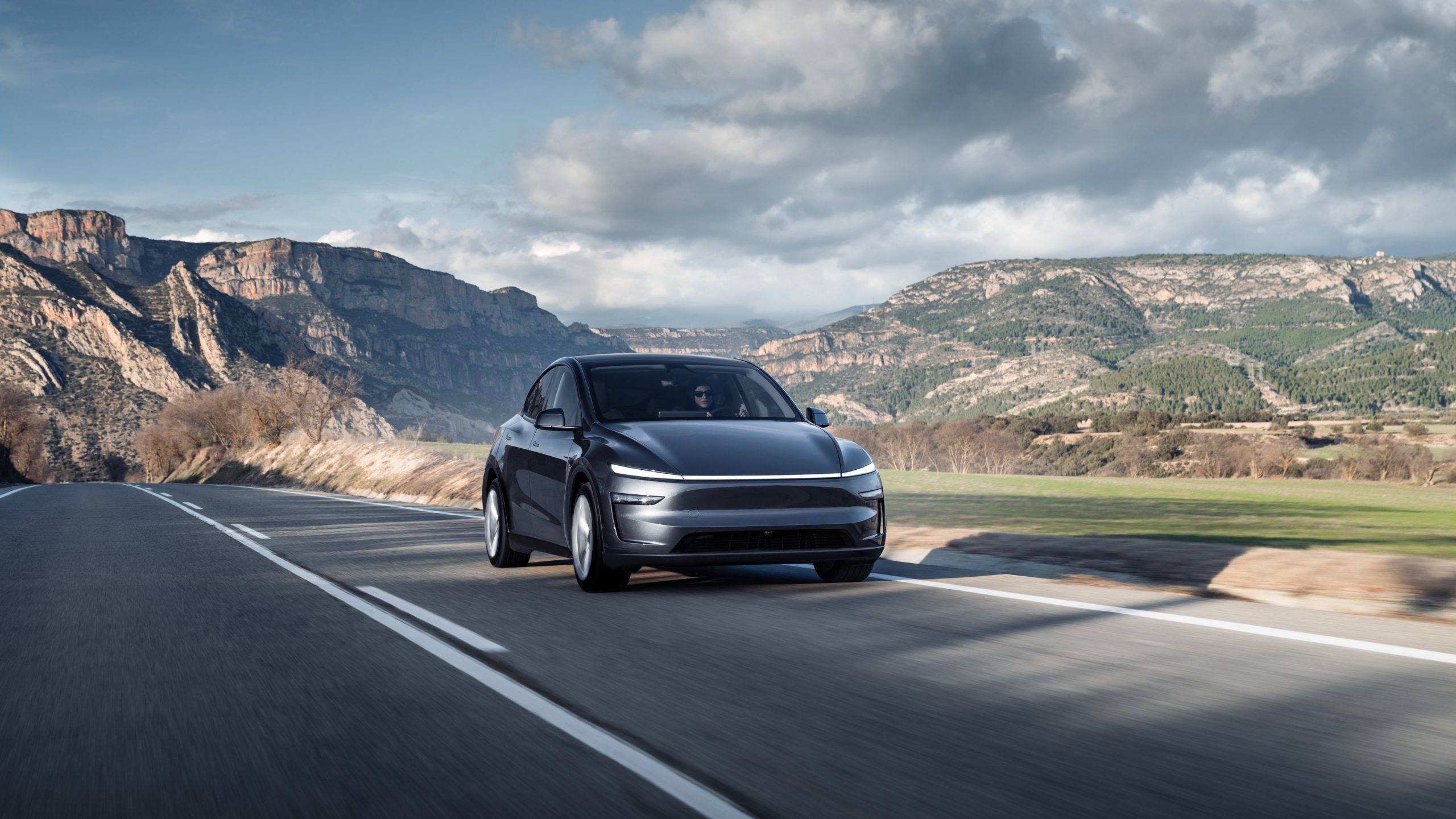
Tesla has rolled out what could very well be its most aggressive promotion for Model Y leases in the United States yet. With the promotion in place, customers would be able to take home a Model Y at a very low cost.
Zero downpayment leases
The new Model Y lease promotion was initially reported on X, with industry watcher Sawyer Merritt stating that while the vehicles’ monthly payments are still similar to before, the cars can now be ordered with a $0 downpayment.
Tesla community members noted that this promotion would cut the full payment cost of Model Y leases by several thousand dollars, though prices were still a bit better when the $7,500 federal tax credit was still in effect. Despite this, a $0 downpayment would likely be appreciated by customers, as it lowers the entry point to the Tesla ecosystem by a notable margin.
Premium freebies included
Apart from a $0 downpayment, customers of Model Y leases are also provided one free upgrade for their vehicles. These upgrades could be premium paint, such as Pearl White Multi-Coat, Deep Blue Metallic, Diamond Black, Quicksilver or Ultra Red, or 20″ Helix 2.0 Wheels. Customers could also opt for a White Interior or a Tow Hitch free of charge.
A look at Tesla’s Model Y order page shows that the promotion is available for all the Model Y Premium Rear-Wheel Drive and the Model Y Premium All-Wheel Drive. The Model Y Standard and the Model Y Performance are not eligible for the $0 downpayment or free premium upgrade promotion as of writing.
News
Tesla is looking to phase out China-made parts at US factories: report
Tesla has reportedly swapped out several China-made components already, aiming to complete the transition within the next two years.

Tesla has reportedly started directing its suppliers to eliminate China-made components from vehicles built in the United States. This would make Tesla’s US-produced vehicles even more American-made.
The update was initially reported by The Wall Street Journal.
Accelerating North American sourcing
As per the WSJ report, the shift reportedly came amidst escalating tariff uncertainties between Washington and Beijing. Citing people reportedly familiar with the matter, the publication claimed that Tesla has already swapped out several China-made components, aiming to complete the transition within the next two years. The publication also claimed that Tesla has been reducing its reliance on China-based suppliers since the pandemic disrupted supply chains.
The company has quietly increased North American sourcing over the past two years as tariff concerns have intensified. If accurate, Tesla would likely end up with vehicles that are even more locally sourced than they are today. It would remain to be seen, however, if a change in suppliers for its US-made vehicles would result in price adjustments for cars like the Model 3 and Model Y.
Industry-wide reassessments
Tesla is not alone in reevaluating its dependence on China. Auto executives across the automotive industry have been in rapid-response mode amid shifting trade policies, chip supply anxiety, and concerns over rare-earth materials. Fluctuating tariffs between the United States and China during President Donald Trump’s current term have made pricing strategies quite unpredictable as well, as noted in a Reuters report.
General Motors this week issued a similar directive to thousands of suppliers, instructing them to remove China-origin components from their supply chains. The same is true for Stellantis, which also announced earlier this year that it was implementing several strategies to avoid tariffs that were placed by the Trump administration.
@teslarati 🚨 Tesla Full Self-Driving v14.1.7 is here and here’s some things it did extremely well! #tesla #teslafsd #fullselfdriving ♬ You Have It – Marscott
-
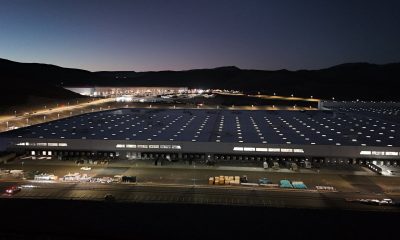
 News1 week ago
News1 week agoTesla shares rare peek at Semi factory’s interior
-

 Elon Musk1 week ago
Elon Musk1 week agoTesla says texting and driving capability is coming ‘in a month or two’
-

 News1 week ago
News1 week agoTesla makes online ordering even easier
-
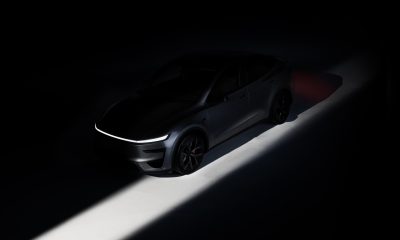
 News1 week ago
News1 week agoTesla Model Y Performance set for new market entrance in Q1
-
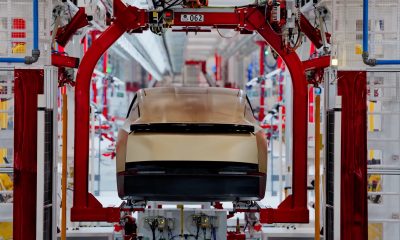
 News1 week ago
News1 week agoTesla Cybercab production starts Q2 2026, Elon Musk confirms
-
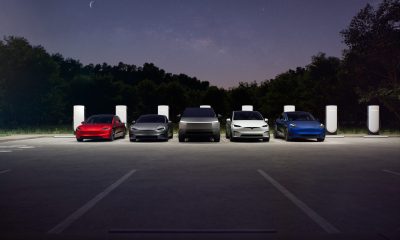
 News1 week ago
News1 week agoTesla is launching a crazy new Rental program with cheap daily rates
-
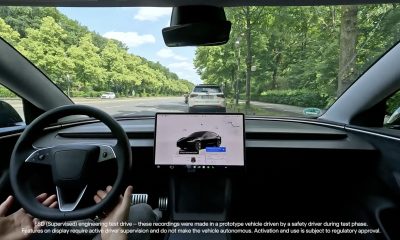
 News1 week ago
News1 week agoTesla China expecting full FSD approval in Q1 2026: Elon Musk
-
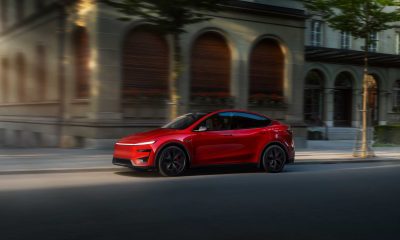
 News2 weeks ago
News2 weeks agoTesla Model Y Performance is rapidly moving toward customer deliveries

